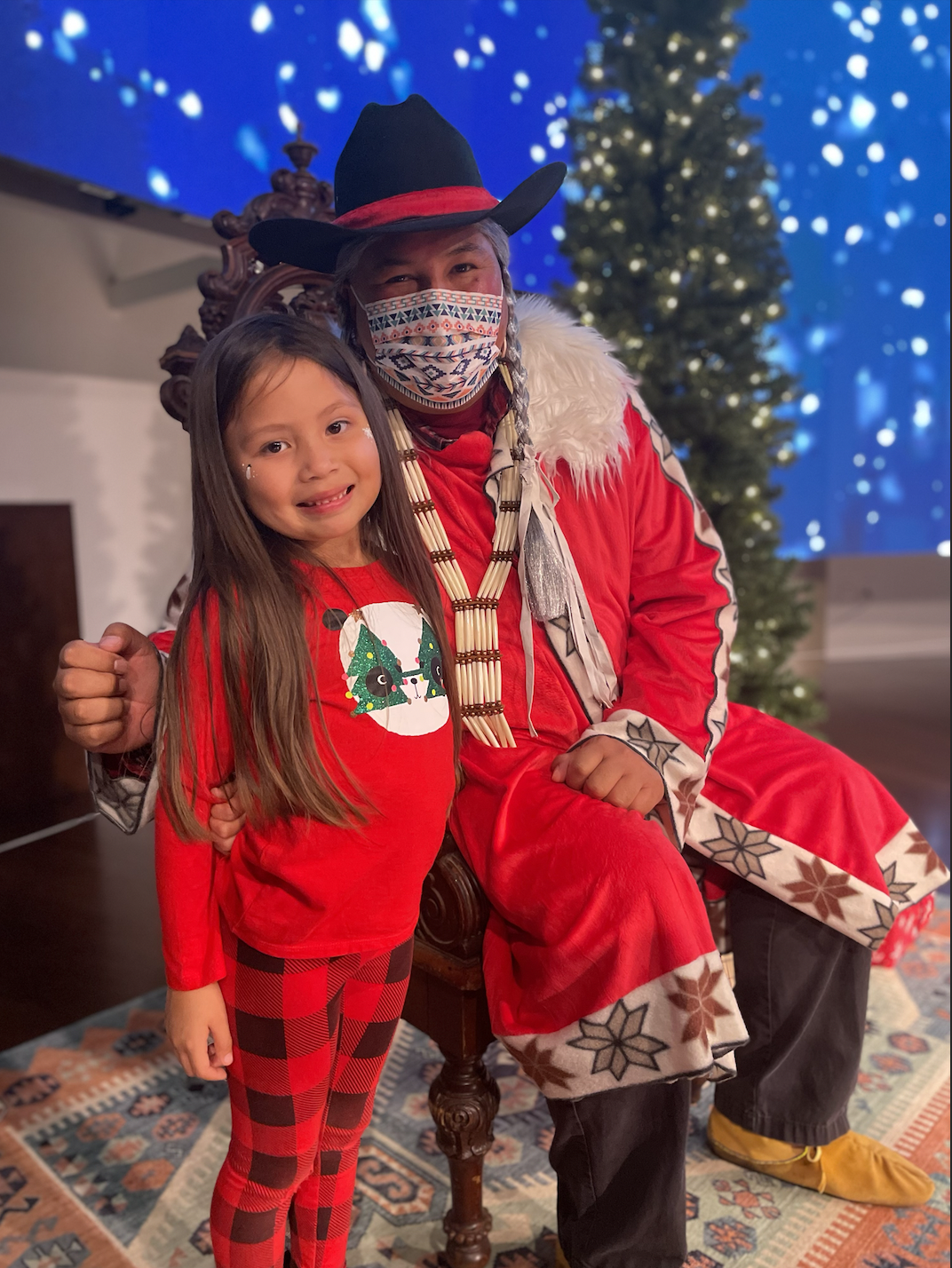Santa wore his long grey braids and traditional red robe-turned-regalia over the weekend, greeting children and adults alike at the newly opened First Americans Museum in the heart of Oklahoma City. Behind him was a digital screen showing a downpouring of snow over his sleigh, pulled by eight bison.

“Kids were really excited to see a Santa Claus that might look like their uncle,” First Americans Museum spokesperson, Ginny Underwood (Comanche), told Native News Online.“The premise is: representation matters. We wanted to create a Santa Claus that our Indigenous folks could identify with, and that other people (could) get an understanding of our diversity and our take on what a Santa Claus might look like.”
The event was free and open to the public on Saturday and Sunday, and drew far more adults to snap a photo with Santa than it did children. On Saturday, 75 children—many dressed in their tribe’s traditional regalia— and more than double the amount of adults took their photos with Indigneous Santa.
Want more Native News? Get the free daily newsletter today.
According to Underwood, it was due to Santa’s—or museum cultural ambassador Ace Greenwood (Chickasaw)—drum playing and song.
“It was really funny because…when he started singing the adults would come running,” she said. She said that many elders remarked afterwards that it was the first Native Santa they’d ever seen.
The museum officially opened Sept. 18 with a mission to highlight the stories of all 39 tribes in Oklahoma today. Underwood said the all-Native curatorial team guides visitors through the museum’s 29 interactive exhibits in first person, highlighting origin stories to Indian removal to statehood to present day history.
“We give more than 500 years of history and context as part of this Okla Homma [meaning "red people" in Choctaw] exhibition, but we also move into contemporary today. We want people to walk away from a museum understanding that we have this shared history and it's American history, but we're still contributing and practicing our cultures today.”
In that way, Underwood said, Indigneous Santa was no different than any of the museum’s exhibits.
“Santa is just one of those types of experiences where we had the opportunity to educate, and then also create a new perspective on what (Santa) could be for Indigneous peoples.”
More Stories Like This
Native News Weekly (August 25, 2024): D.C. BriefsUS Presidents in Their Own Words Concerning American Indians
Native News Weekly (December 28, 2025): D.C. Briefs
Minnesota Lt. Gov. Flanagan Draws Right-Wing Backlash After Wearing Hijab in Solidarity With Somali Community
Haaland Meets with Southern New Mexico Law Enforcement on Public Safety Priorities
Help us defend tribal sovereignty.
At Native News Online, our mission is rooted in telling the stories that strengthen sovereignty and uplift Indigenous voices — not just at year’s end, but every single day.
Because of your generosity last year, we were able to keep our reporters on the ground in tribal communities, at national gatherings and in the halls of Congress — covering the issues that matter most to Indian Country: sovereignty, culture, education, health and economic opportunity.
That support sustained us through a tough year in 2025. Now, as we look to the year ahead, we need your help right now to ensure warrior journalism remains strong — reporting that defends tribal sovereignty, amplifies Native truth, and holds power accountable.
 The stakes couldn't be higher. Your support keeps Native voices heard, Native stories told and Native sovereignty defended.
The stakes couldn't be higher. Your support keeps Native voices heard, Native stories told and Native sovereignty defended.
Stand with Warrior Journalism today.
Levi Rickert (Potawatomi), Editor & Publisher

